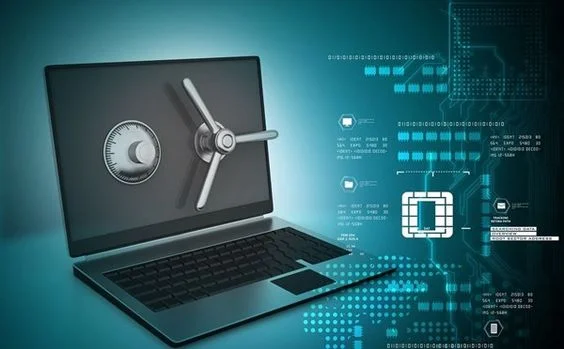Security Information and Event Management (SIEM) technology consolidates security alerts and logs data from applications, devices, servers, and infrastructure into one centralized platform for real-time analysis, providing security operations centers with improved visibility into their environments, the investigation of incidents, and compliance mandates.
Antivirus and firewall technologies cannot identify every threat, so our model-based correlation rules detect anomalous behaviors to flag potential breaches and threats that bypass traditional antivirus and firewall technologies.
Definition
Security information and event management (SIEM) tools are integral parts of many cybersecurity solutions, providing a centralized location for system log data and security alerts that enables security professionals to gain a clearer picture of the company's security environment, identify threats more readily, and take appropriate actions against threats more promptly.
Cybercriminals have become adept at exploiting even minor vulnerabilities in security infrastructure to gain entry and steal sensitive data or cripple company networks, often leading to millions in financial losses and damage to a company's reputation among current and prospective customers. SIEM systems promise early detection by monitoring company networks for suspicious activity and reporting suspicious activities as soon as they occur.

SIEM technology employs software tools to analyze log and security alert data. These include aggregation and correlation to identify patterns within the data. Visualization tools also enable analysts to quickly sift through large amounts of information to find what matters most - especially useful when detecting zero-day attacks or polymorphic malware that cannot be identified with traditional antivirus systems.
These tools can also trace an attack's path across a network, making it possible to detect lateral movements by hackers and disgruntled employees using VPNs to gain entry. A SIEM system can recognize this pattern and alert security teams immediately if further investigations or responses are needed.
SIEM systems can also detect insider threats from employees and former workers, including unauthorized access by them through the use of credentials to gain entry to company systems and gain confidential or proprietary data. A SIEM can monitor for suspicious activity among administrators or authorized users within an organization's systems - sending alerts directly to security teams should any unauthorized access or breaches in security occur.
Security Information and Event Management systems increase visibility within a company's IT infrastructure and enhance its Security Operations Center (SOC). This means reduced response times when responding to cyberattacks or threats, such as compliance reporting, ultimately reducing overall costs.
Scope
Security Information and Event Management (SIEM) is a solution that provides threat response teams with alerts, visibility, and actionable data about security incidents on an IT network. SIEM features include log management/centralization/security event detection/search capabilities - it may be deployed on-premises and in cloud environments.
Every company employs multiple devices in its IT environment, creating security data. Unfortunately, attackers can exploit even minor vulnerabilities to access sensitive information and disrupt business operations. To mitigate such risks, SIEM software collects security data from all devices and processes across an enterprise and indexes it for searching before displaying results on one dashboard.
SIEM can identify threats by searching and analyzing event data to spot real-time patterns, correlations, and anomalies. A security analyst can use its dashboard to search and monitor information from networks, applications, servers, and databases, as well as external threat intelligence from firewalls and antivirus programs.
SIEM can assist in mitigating cybersecurity threats by identifying vulnerabilities and providing visibility into the status of vulnerability protection products. Furthermore, it combines IT operational data with security intelligence for an all-inclusive view of activity within an IT infrastructure, making it easier to detect and respond to suspicious activities.
Security information and event management solutions monitor for threats. They are designed to deliver reports and notifications across an organization and provide user and entity behavior analytics that identify patterns that indicate an attack may be taking place.
A practical security information and event management solution consider every company's unique requirements when designing its software. It should clearly define which events are relevant for security and which actions they require, considering industry regulations, risk levels, compliance needs, and industry-specific industry regulatory requirements.
Implementation
Security Information and Event Management solutions give real-time visibility of threats. By combining security event management (SEM) and information management (SIM), these solutions provide real-time surveillance capabilities against emerging threats. UEBA allows real-time data monitoring to detect anomalous behavior; SOAR supports increased efficiency within SOC teams.
SIEM systems use collection agents to gather events from network devices, servers, end-user devices, and security equipment like firewalls and antivirus programs. Once collected data has been forwarded by these collection agents to centralized management consoles for analysis by security analysts, often such as failed login attempts indicating hacking attempts can be flagged automatically by SIEM tools.
SIEM solutions offer one key advantage over traditional antivirus and firewall solutions: their ability to identify advanced attacks that bypass traditional detection mechanisms like antivirus or firewall software. This detection power relies on several factors, including correlation across data sets and machine learning for pattern identification - this helps detect anomalous behavior such as repeated failed login attempts which indicate an attack via brute force techniques.
Companies and IT departments with sensitive customer data or large IT departments employing thousands of staff can benefit immensely from implementing a SIEM solution, providing visibility and intelligence needed to anticipate threats such as ransomware or zero-day attacks and safeguard their IT infrastructure for business continuity.
SIEM systems offer unparalleled insight into compliance issues resulting from breaches or IT system misconfiguration, providing valuable data that can help address weaknesses and mitigate risk. Furthermore, logs stored by SIEM systems may prove invaluable evidence during investigations or legal cases; often, this feature is required for compliance with regulatory standards.
Reporting
Security incidents can severely compromise a company's image and customer base while placing the organization at severe financial risk. Cybercriminals have become adept at exploiting even minor gaps in security to gain entry and steal sensitive data or infiltrate networks with malware. Costly data breaches can cause irreparable damage to customer trust in businesses.
Companies need to quickly recognize potential threats as they emerge by monitoring events and logs across their entire IT infrastructure, then analyzing them in real-time. Security information and event management (SIEM) provides visibility into malicious activity across network applications and hardware so organizations can respond promptly.
SIEM tools collect log data from all devices in an IT environment, including servers, networks, databases, and security solutions such as firewalls and antivirus filters. They then compare this data against behavioral rules defined to identify any deviations that might require further investigation - helping avoid false positive alerts that don't apply.
As attacks against organizations become increasingly sophisticated, any SIEM solution must incorporate advanced analytics to protect and defend the organization and mitigate against attacks. These should include User and Entity Behaviour Analytics, Network Detection and Response, Security Orchestration Automation and Response (SOAR), Machine Learning, Artificial Intelligence as well as Machine Learning capabilities - providing visibility, correlation, and automated responses in real-time while decreasing the manual effort, required by security teams when handling incidents.
SIEM solutions should provide an all-encompassing view, consolidating data from multiple sources into a central dashboard for ease of use and incident response. In addition, effective SIEM solutions should be able to monitor live changes, alert users of events' status updates, and generate audit trails of activity. They also provide policies to prevent repeat events, strengthening IT security infrastructure while mitigating future attacks.
